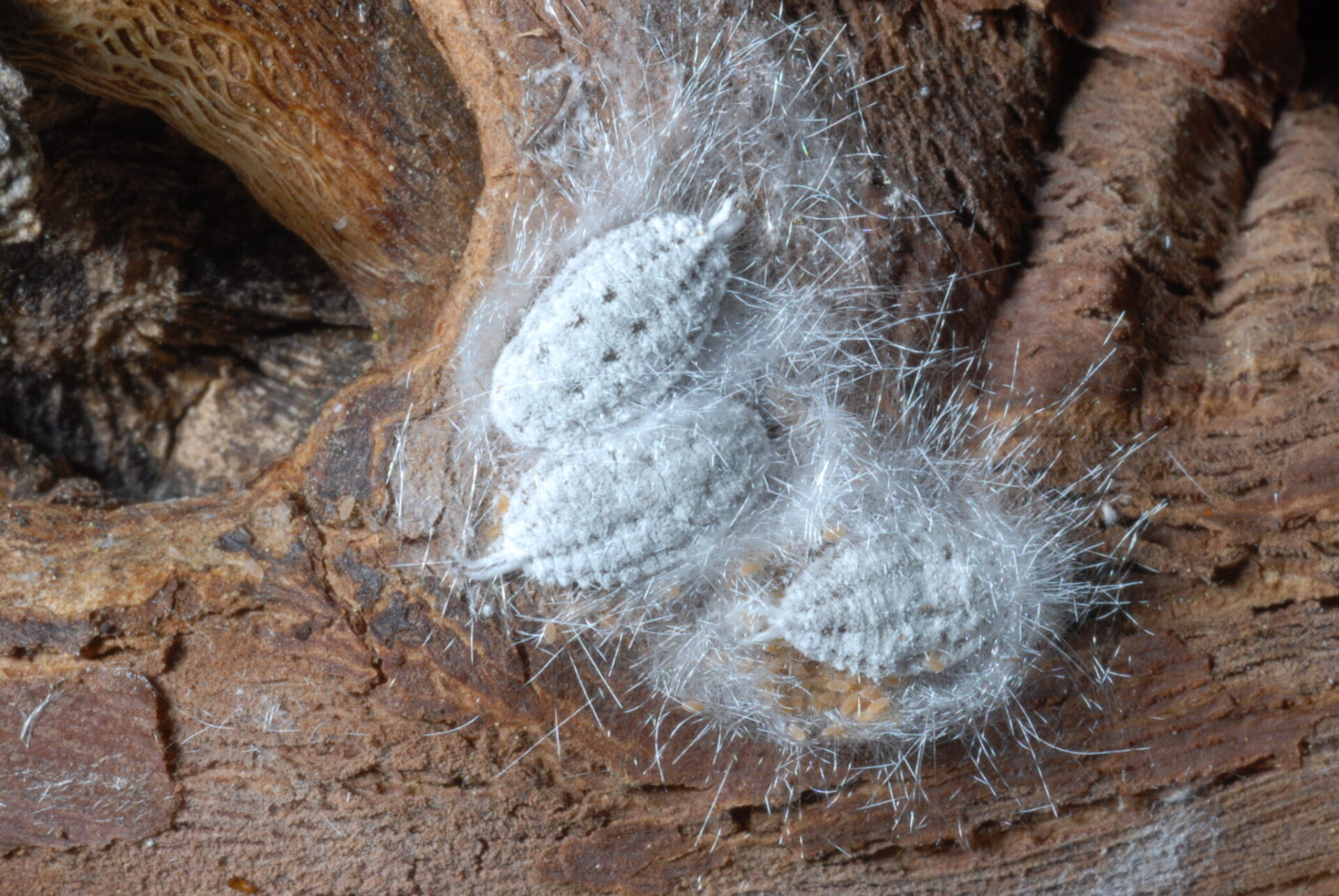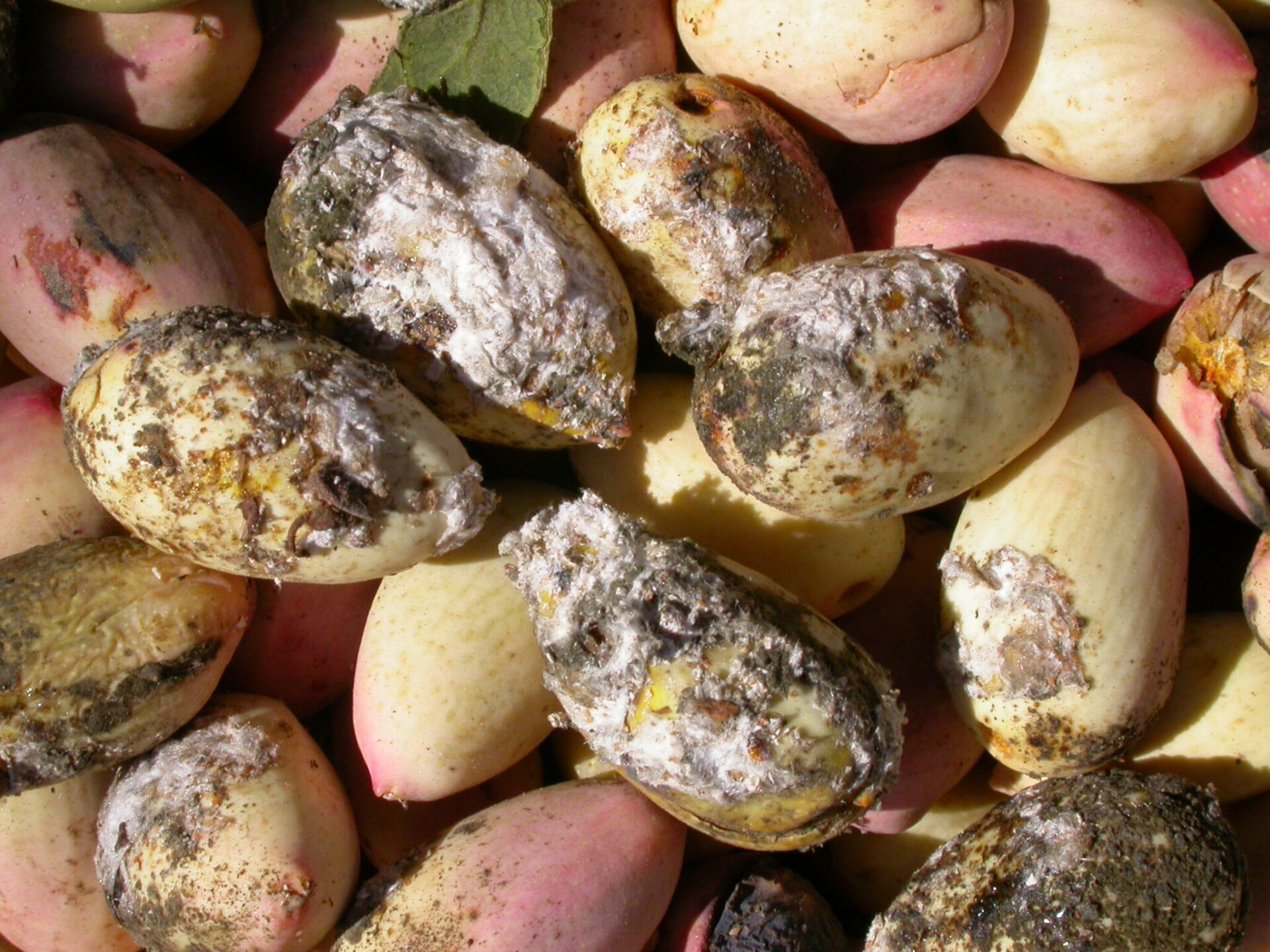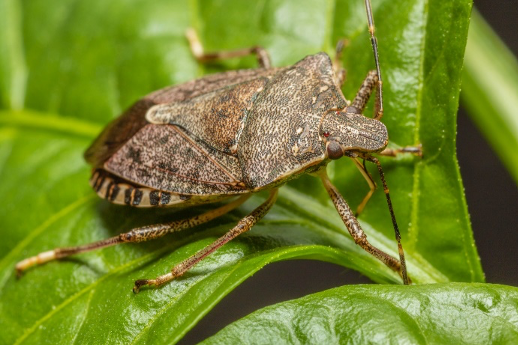
When it comes to emerging pests in pistachios, a scale and a moth loom large outside of the U.S. Then there is the brown marmorated stink bug: It is present in California and causing damage to almonds, but has yet to be reported in pistachios.
And any discussion of emerging pests in pistachios has to include Gill’s mealybug, not so much because the pest is new to North America, but because problems with it are accelerating.
As UCCE Entomology Farm Advisor for Kern County David Haviland reported in West Coast Nut last spring, insecticide programs that formerly controlled Gill’s mealybug are no longer providing the same level of control. Further, Haviland reported, nobody knows why.
UCCE Entomologist and Biocontrol Specialist Kent Daane said he and Haviland plan to spend the next few years studying the pest in hopes of uncovering answers to that question.
Daane is concentrating on the biology of the pest, while Haviland is looking at how the pest is responding to different chemistries.
One theory for the reemergence of Gill’s mealybug as a pest of concern in pistachios is that changes in the environment or orchard practices over the past 15 years have altered mealybug development to the point it is less synchronized than it once was. What used to be a synchronized start to mealybug activity in March has now become spread out. And where one spray in June formerly provided season-long control, today it doesn’t.
“Maybe what is happening is that the population age structure of the mealybug has changed,” Daane said. “Today, some part of the population is a third instar when another part is a first instar, so when you put on the insecticide, which kills the small stages, well, you’ve got an adult out there and the adult is about ready to produce crawlers, and she is not feeding, she is not molting, and so the insecticide misses a tiny portion of the population.”
Insecticide Issues
Researchers also are looking at the potential that the pest has developed resistance to commonly used insecticides, but Daane doesn’t think the answer lies there.
“We don’t expect it to be resistance, because it would have been unusual for the mealybug to develop resistance to insecticides with completely different modes of actions,” he said. “We are finding that everything—the IGRs (insect growth regulators), the neonics (neonicotinoids), everything—is not doing as well today as it was 15 or so years ago.”
Still, researchers aren’t ruling out resistance, and that will be one avenue Haviland will be studying.
The loss of chlorpyrifos, or Lorsban, also has surfaced as a possible reason for the reduced efficacy of insecticide control programs. “In the past, Lorsban might be used as a leaffooted bug control, and maybe with that being removed from the arsenal… that has allowed Gill’s mealybug to come in,” Daane said.
And there are concerns that broad spectrum insecticides, such as the pyrethroids that are sometimes used to control navel orangeworm in pistachios, are killing the natural enemies of Gill’s mealybug.
“We are now trying to look at all control facets to see if we are able to figure out why the insecticides are not working as well, and to see if there are ways to manipulate natural enemies and just have the parasitoids do the work,” Daane said.

First Sighting in the Late ‘90s
Gill’s mealybug, Ferrisia gilli, was first found in pistachios in California in the late 1990s. By 2006, it had spread to at least 3,000 acres in 11 counties. Adult female mealybugs are flat and oval, ranging in size from two to five millimeters, and have a pink body covered with white wax, giving it a striped appearance.
Mealybugs damage pistachios by sucking plant juices through their straw-like mouthparts, robbing trees of carbohydrates intended for fruit development. Feeding damage to the pistachio hull causes shell staining that can devalue high-quality split-inshell nuts. Severe feeding on the rachis or hull can cause nuts to dry up and shrivel prior to harvest. Mealybug feeding also results in the production of honeydew that acts as a substrate for black sooty molds.
The most common predators of mealybugs in pistachios are green and brown lacewings and lady beetles. Several parasites have been found in almonds and grapes that also attack Gill’s mealybug in California; however, these parasites have not been found in pistachios, likely, researchers surmise, because of the use of broad-spectrum insecticides used for controlling true bugs.
Daane added that while softer chemistries have been shown to be effective at controlling the smaller mealybug stages in other crops, they are not as effective as the conventional systemic materials more widely used in pistachios to control the pest and may not have a fit in pistachios, given the current off-synchronistic stages of the pest found in the crop.
“The softer materials best impact the smaller mealybug stages and they aren’t systemic,” Daane said “So, for any mealybug that has an off-synchronistic population, with larger as well as smaller stages, the biologicals won’t work as well. And, for any mealybug that has a part of its population hidden in the cracks and crevices of a tree, those materials won’t contact that bug and won’t work as well.”
Gill’s mealybug control is further compounded in pistachios by the fact that coming in with a second treatment to try and control the pest later in the season can cause issues with maximum residue levels (MRL) in cases where pistachios are exported, particularly in cases where the crop is exported to European countries, many of which are working on a default MRL, or essentially zero tolerance of any pesticide residues on the nuts.
Daane said it could be two or three years before the researchers can provide answers to the multiple questions surrounding this issue. In the meantime, the researchers are recommending growers stay with the treatment program first identified in the mid-2000s of treating for the pest when the majority of its crawlers are out and feeding, typically late May to early June.
Watch for New Pests
Daane added that growers also should keep an eye out for possible new pests in pistachios, including the pistachio twig borer moth, which is currently considered the third most important pest of cultivated pistachio trees in the tree’s country of origin, Iran, and the yellow pistachio hard scale, which also has become a pest of economic importance in pistachios in the Middle East.
“Insects are being moved around the world,” Daane said. “We are sharing each other’s pests at this point in time. There is so much movement of people and commerce, and you might have one of these insects as a pupa get into something else and make it over here.”
Daane advised growers to watch for any new moth damage or for any new scale pests and if seeing something of concern to contact their local farm advisor or county agriculture commissioner.
“We don’t want those pests here,” he said.
Growers also should watch for any sign of brown marmorated stink bug, Daane said. “It is here,” he said. “It has been reported to be a pest of almonds, and it is a potential threat to pistachio, even though it is not a pest of pistachio, per se. It is another trash insect in that it will feed on so many different hosts.”
















